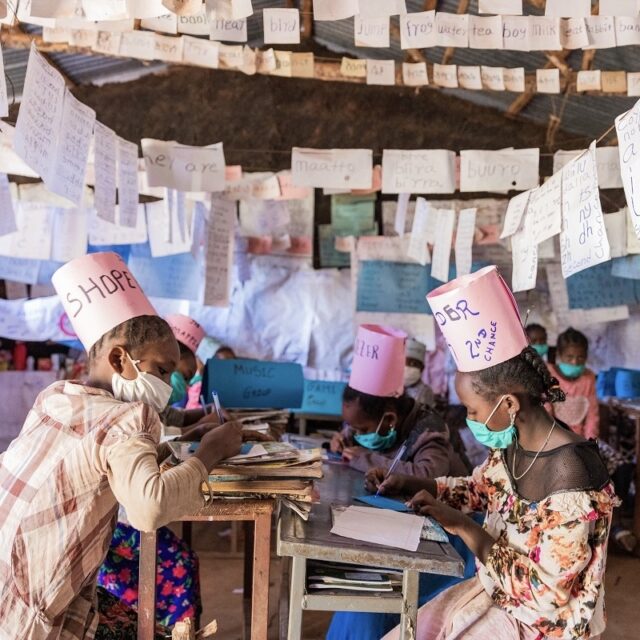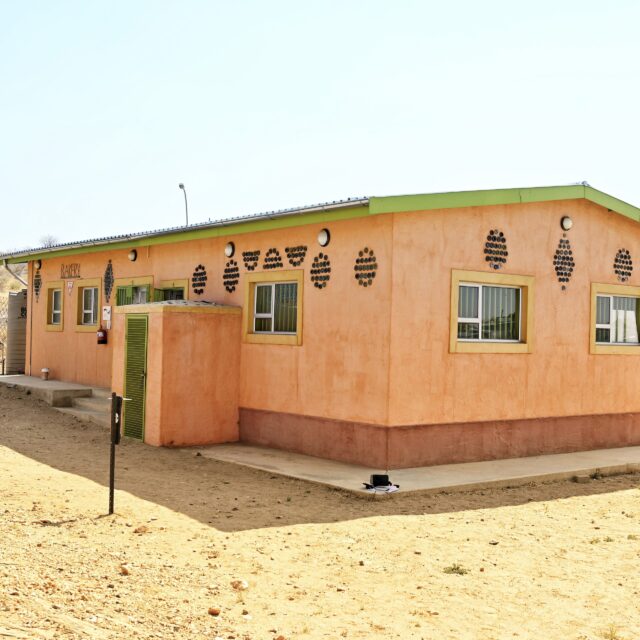Caitlin Baron is the CEO of the Luminos Fund. Photo credit in this piece goes to Mekbib Tadesse for the Luminos Fund.
Like many children in Ethiopia, Esayas hardly set foot in a classroom during the first decade of his life. Instead, he stayed home, helping his parents on their farm, a crucial source of food for the family of six.
Fast-forward 10 months and on average, 90% of Esayas‘s classmates will have transitioned into mainstream school, 75% will stay in school for another six years, and 69% will aspire to go into higher education.
Yet, for many children across the world, classrooms aren‘t like this. While some remain closed due to COVID-19, many more have re-opened. But COVID-19 is compounding what was already a learning and teaching crisis.
Global school closures shone a light on vast disparities in both learning and learning loss. By the end of this year, more than 70 million 10-year-olds will not be able to read and understand a simple story, according to ONE‘s Lost Potential Tracker. The tracker predicts that COVID-19 will be responsible for the failure of 11.4 million children to master basic literacy skills by age 10.
This loss is exacerbated in the Global South, such as sub-Saharan Africa. The economic fallout of COVID-19 is more likely to push children to drop out of school permanently, as children enter the labour market or leave the family home for marriage. An additional 2.4 million children in sub-Saharan Africa will likely be unable to acquire basic literacy skills by age 10 by the end of 2021, taking the total to 26.7 million in sub-Saharan Africa alone.
This July, the Global Partnership for Education is calling on the global education community to prioritise universal literacy by age 10. The benefits of achieving this goal would be exponential. First, it would save lives; a child whose mother can read is 50% more likely to live past the age of 5 and is twice as likely to attend school. Second, it would present a route out of poverty. With every year of additional schooling, an individual‘s earnings increase by up to 10%. For women, it increases by 20%.
A crucial part of the puzzle
Yet, pausing to reflect on Esayas‘s story, joy is a crucial part of the puzzle that should not be glossed over. If we are to focus solely on the universal part of education, we risk reverting to a model that only counts the number of children walking through the classroom door and receiving lecture-style teaching in classes of 80+ students.
This model of teaching is proven to be less engaging in getting children into school, ensuring they‘re learning, and keeping them in the classroom. For example, among the poorest households in Ethiopia, students of joyful learning complete primary school at double the rate of their government-schooled counterparts.
Children learn better when they are happy. We all want rich, five-senses education for all children, no matter where they live, but our perception of what’s possible sometimes narrows when we consider education in the world’s poorest or conflict-stricken corners. This does not have to be true. Joyful learning is possible in the Global South – and it’s necessary if we want to help children catch up after COVID. If out-of-school children find joy in learning, they will be motivated to go to school and remain there.
If a classroom looks and feels encouraging, it removes the apprehension that many children may have and creates an environment where they feel comfortable participating. Encouraging children to actively practice teachers‘ lessons encourages them to take charge of their learning journey – a skill essential to lifelong learning.
If we acknowledge that children learn best in many ways – through singing, playing games together, making paintings, and engaging with their local cultures – we‘re putting a premium on joy, and it doesn‘t have to be expensive.
We know joyful learning produces better educational outcomes for children: students of joyful learning persist in school better than their peers and are happier and more confident, even years later. So, if we agree that education is the one gift that children carry with them for the rest of their lives, then joyful learning should be an integral part of solving the universal basic literacy puzzle.
In the words of Tegitu, a teacher in Ethiopia, “Education gives you multiple avenues to success. By education, it means for me every type of education – in and out of school. Anything new and useful that we learn will contribute to change our lives.”



